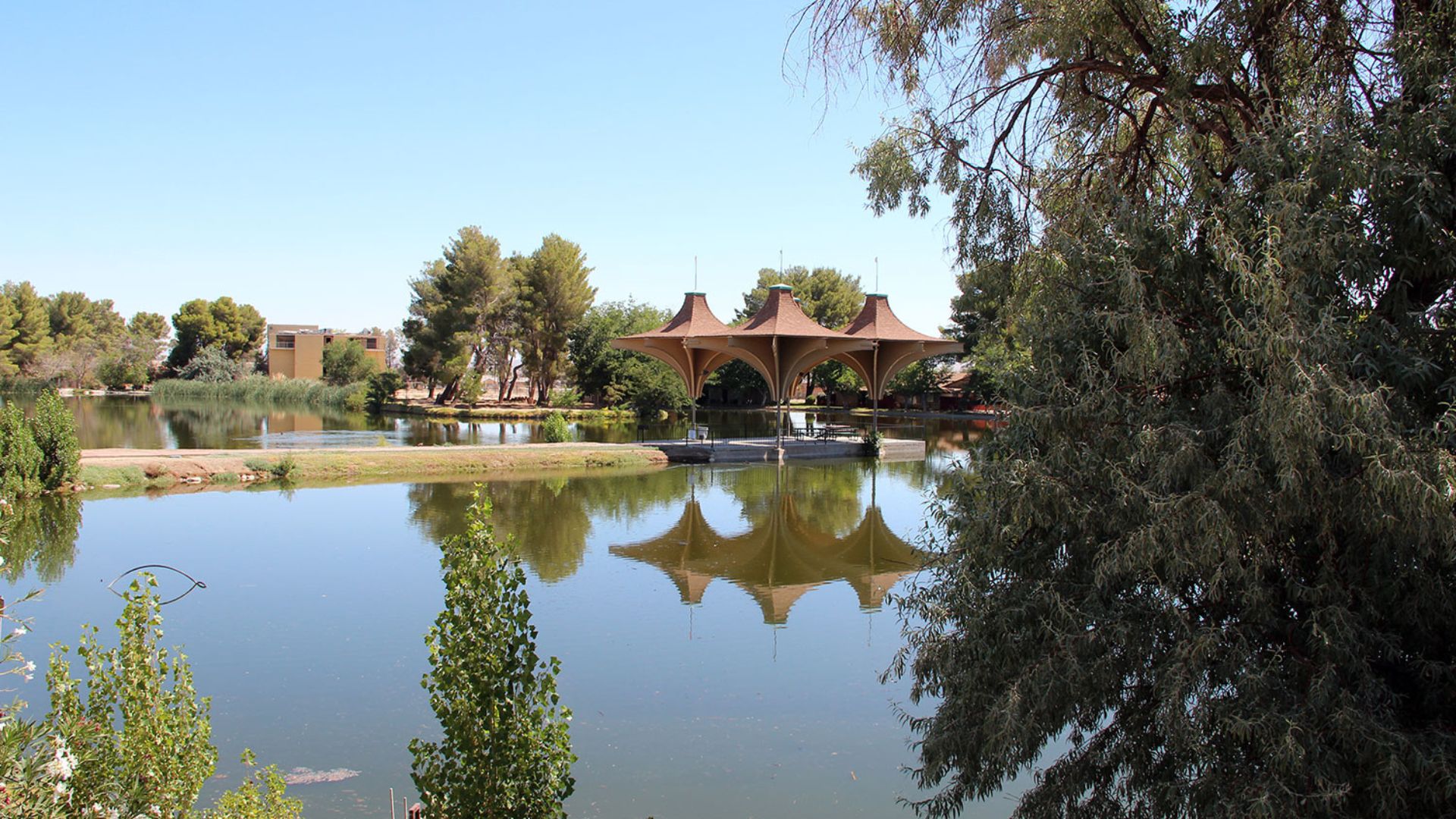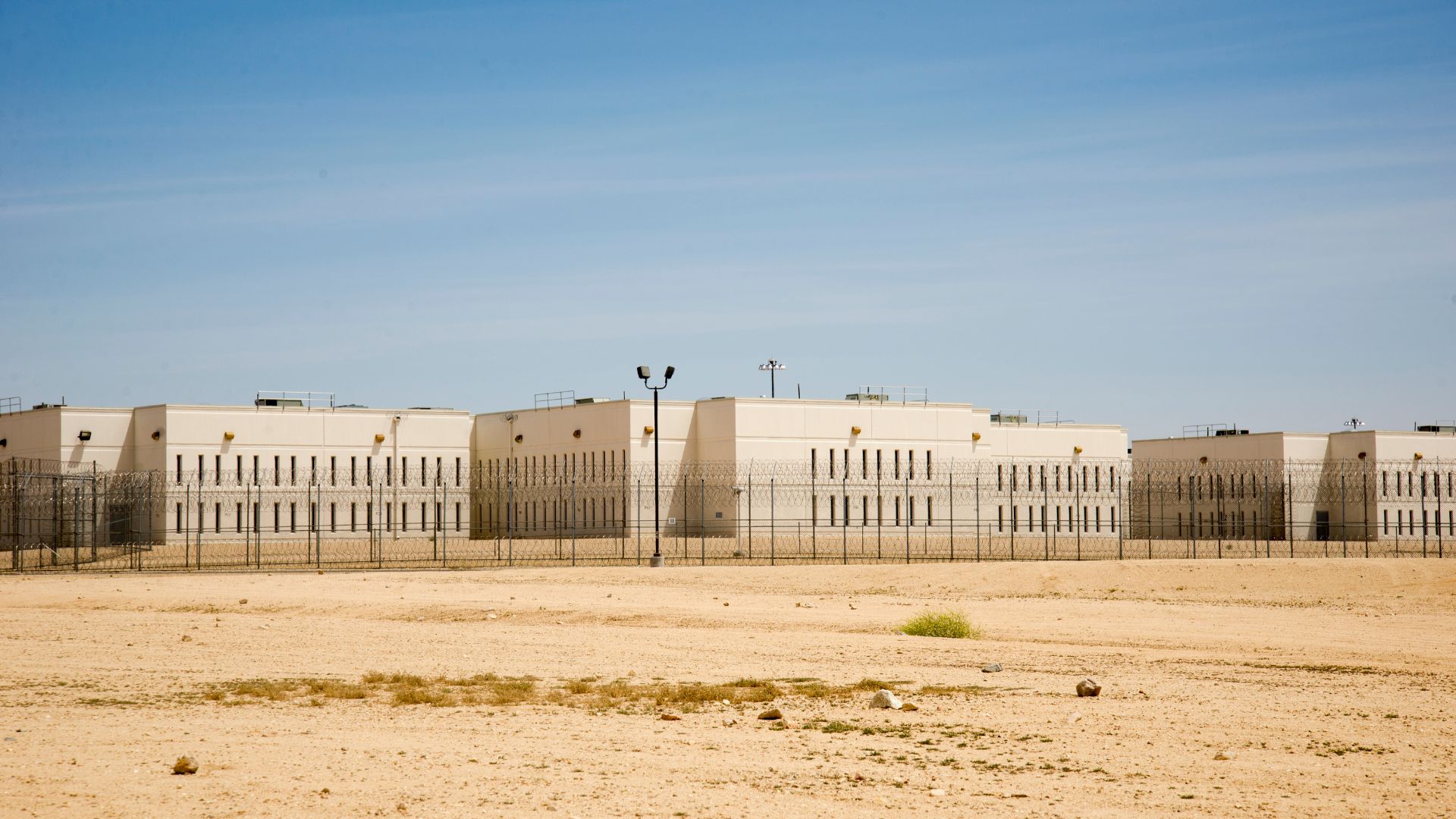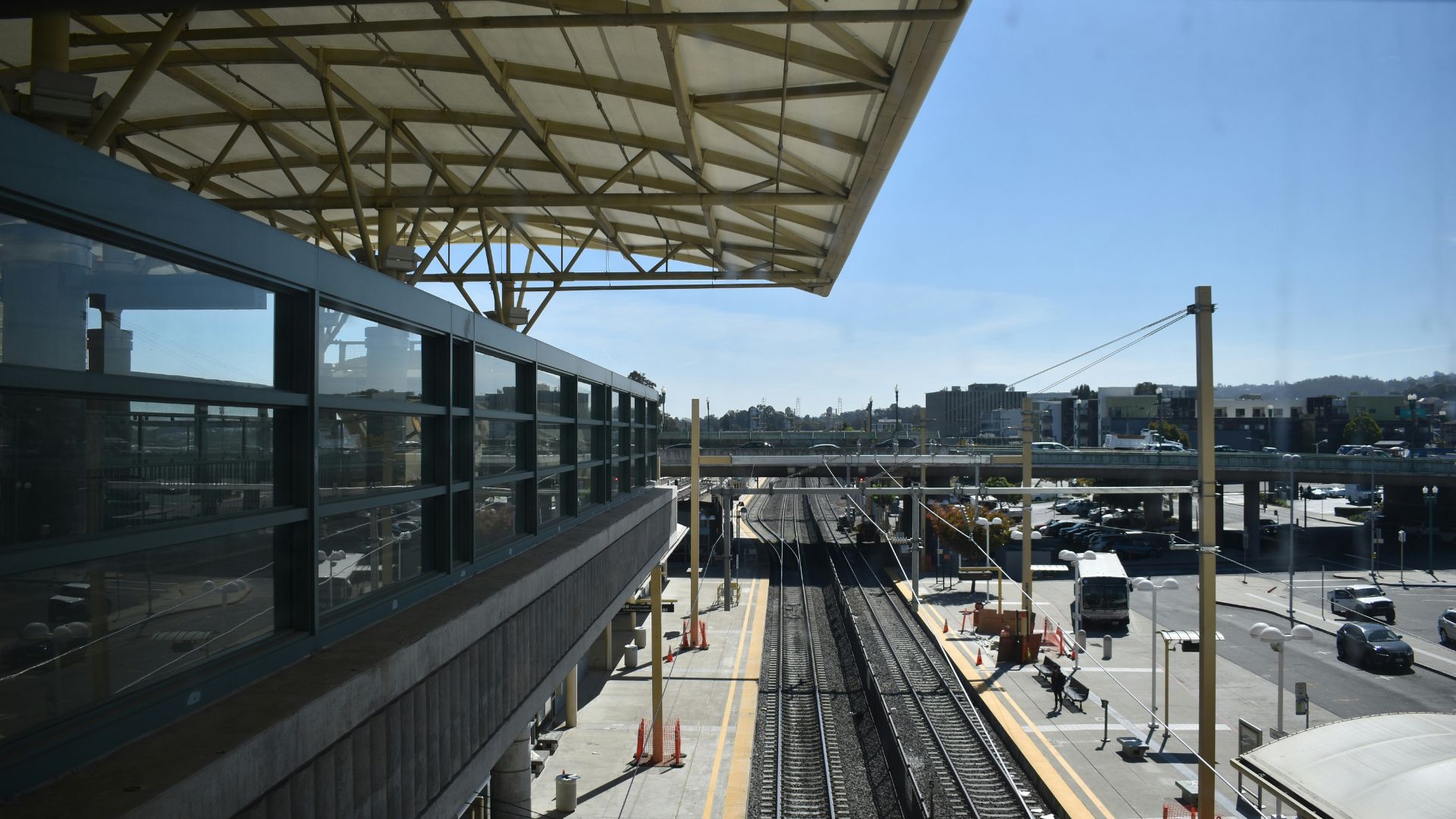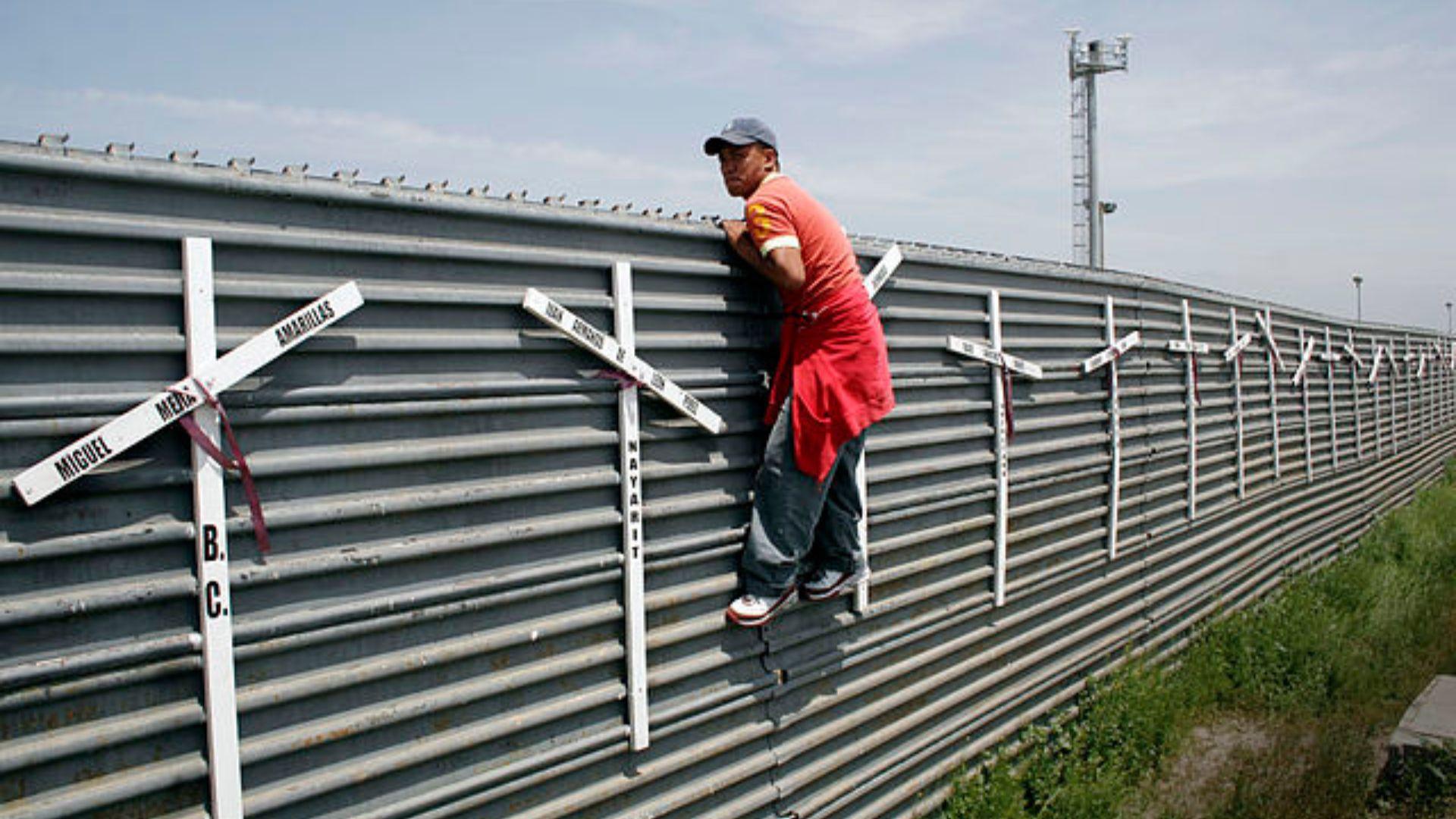This California City’s Population Plunged Nearly 12% in 2023
Amid a recent California exodus, one California city’s population has dropped by almost 12% in 2023 alone.
While some California towns have seen their population drop, other cities have seen gradual rises in residents — even as many have decided to flee the state for cheaper living elsewhere.
California City Sees Drop in Population
New data released by the California Department of Finance has revealed that California City, a town located in the northern Antelope Valley about 100 miles north of Los Angeles, has seen a stunning drop in population in 2023.

Source: Craig Dietrich/Wikimedia Commons
According to this data, California City’s total population dropped by 11.8%. This drop in population is interesting, as many of the city’s residents are workers at Edwards Air Force Base.
Prison Populations
However, experts have stated that this massive drop seen in California City in 2023 could reflect the number of prisoners decreasing throughout the year.

Source: Anthony Albright/Wikimedia Commons
Population numbers also include prisoners in the city. As California City houses the California City Correctional Center, this population drop could be the result of fewer prisoners being housed in this facility.
Other Population Drops
California City isn’t the only town that saw population decreases in 2023, according to this state data. Tehachapi fell in population by 7.4%, while Crescent City dropped by 3.5%.

Source: Sarah Stierch (CC BY 4.0)/Wikimedia Commons
However, analysts also believe that this drop in population in these specific cities all has to do with changes seen in their prison populations.
California’s Exodus
For the last few years, California has been experiencing an exodus, which has seen its state population decrease with each year.

Source: Roberto Nickson/Unsplash
Former California natives have chosen to leave their home state for a new beginning elsewhere for a variety of reasons. However, California’s incredibly high cost of living, as well as high housing costs, have fueled many of these exits.
An End to the Exodus?
This latest data does suggest that California’s exodus may soon be over, as 2023 saw the state’s population grow for the first time in three years.

Source: Lala Miklós/Unsplash
However, the population growth was quite small, as only 67,000 additions occurred throughout the year.
Some Cities Increased, While Others Decreased in Population
While the entire state’s population may have increased last year, not every California city or town experienced this increase.

Source: Daiwei Lu/Unsplash
All one has to do is look at the Bay Area to see this. While some cities in the Bay Area did see population increases, others saw small decreases.
The Biggest Population Increases in California
According to this state data, Emeryville experienced the third-biggest population increase throughout the entire state. In 2023, Emeryville’s population shot up by at least 5%.

Source: MicheleKay Saiki-Poaha/Unsplash
There may be many reasons why this specific city in California saw one of the biggest increases. However, the state Finance Department has pointed to the 6.4% rise in Emeryville’s housing supply as one of the most likely reasons.
California’s Housing Shortage
This increase in Emeryville’s population — likely as a result of its housing supply being increased — is notable, as California is continuing to go through a housing crisis.

Source: David Vives/Unsplash
There aren’t enough houses on the market, or enough houses being built, to accurately meet the demand seen in various cities up and down the state. Emeryville’s housing supply rose more than double any other city or town in the Bay Area. Now, the city has a population boost to show how beneficial this housing decision has been.
Other Housing Supply Increases
Emeryville isn’t the only town that added to its housing supply to try to meet this growing crisis. Lathrop, located in San Joaquin County, increased its housing supply by about 5.4%. The city has since seen its population grow by this same percentage.

Source: Matt Benn/Unsplash
Meanwhile, Millbrae, located in San Mateo County, saw its housing supply rise by 3%. This led to its population increasing by 1.8% in 2023.
Locals Returning Home
The biggest population increase seen throughout the entire state occurred in Paradise. Paradise is perhaps best known as the town that faced a huge crisis during 2018’s Camp Fire.

Source: Manny Becerra/Unsplash
In 2023, Paradise saw a population growth of 16.1%. This population increase was likely the result of many residents finally being able to return home after being displaced during the fire, and then during the aftermath of the fire.
California’s Future
Looking at these city increases and decreases can better help local experts understand how some cities are faring well and bringing more people in — and how other towns aren’t as successful.

Source: Antonio Gabola/Unsplash
As California works to keep the exodus from occurring again, analyzing this data may point them in the right direction.
Remote Work Revolution
The rise of remote work has dramatically reshaped population trends in California. Many residents, no longer tied to physical office locations, are relocating to more affordable or desirable areas.

Brooke Cagle/Unsplash
This shift is particularly evident in smaller towns like California City, where the exodus includes remote workers seeking better living conditions without compromising their professional careers.
Migration Motivations
As remote work becomes more prevalent, people are choosing locations based on lifestyle preferences rather than job proximity. This trend is driving the population away from high-cost urban centers to rural or suburban areas.

Source: Andrea Piacquadio/Pexels
California City’s population decline reflects this broader movement, where remote workers prioritize housing affordability and quality of life over urban amenities.
Economic Consequences
A declining population in California City has significant economic implications. Local businesses face reduced customer bases, potentially leading to closures and job losses. Real estate markets may experience declining property values, affecting homeowners and investors.

Source: Lukas/Pexels
Additionally, lower tax revenues from a shrinking populace can strain municipal services and infrastructure maintenance, creating challenges for city planners.
Environmental Benefits
A silver lining to a decreasing population is that less human activity can decrease pollution and pressure on local ecosystems.

Source: Freepik
This presents opportunities for sustainable development and conservation efforts, turning a population decline into a chance for ecological restoration and improved environmental health.
Infrastructure Challenges
Maintaining infrastructure with a smaller population poses challenges. Reduced tax revenue can limit funds available for road repairs, public transportation, and utilities.

Source: Jeriden Villegas/Unsplash
This necessitates strategic planning to ensure essential services remain operational and sustainable, balancing budget constraints with the need for reliable infrastructure.
More People Leaving California for Other States
California is experiencing a population loss as residents move to states like Texas, Oregon, Nevada, and Arizona, primarily due to high housing costs.

Thanhy Nguyen/Unsplash
A recent PPIC survey found that 34% of Californians are considering relocating because of these costs. Lower-income residents are most affected, but even higher-income individuals, facilitated by remote work and political preferences, are increasingly leaving the state.
Community Dynamics
As the population ages, community dynamics in California City evolve. There’s an increased demand for senior services, healthcare, and recreational activities suited for older adults.

Source: Freepik
Simultaneously, the influx of diverse ethnic groups enriches cultural life but also requires effective integration strategies to maintain social harmony.
Birth Rates Decline in CA
Declining birth and fertility rates are a global phenomenon influenced by economic and social changes, particularly among women. In the US, no state maintains the 2.1 fertility rate needed to sustain population size.

Source: Omar Lopez/Unsplash
California’s rate fell from above the national average in 2008 (2.15) to the seventh-lowest in 2020 (1.52), driven mainly by fewer births among 20-somethings, who are less likely to marry. In California, two-thirds of births are to married women.
Immigration Numbers Recovering from Pandemic Lows
International immigration to California plummeted during the pandemic, with only 44,000 immigrants from July 2020 to July 2021—the lowest in three decades. However, numbers rebounded to 126,000 from July 2021 to July 2022.

Source: Tomas Castelazo/Wikimedia Commons
Immigrants, mostly aged 25-54, are vital to California’s economy, contributing significantly to sectors like technology, healthcare, agriculture, and hospitality. Historically, higher birth rates among immigrants helped offset declines among US-born residents.
Tech and Innovation Hubs
California City is exploring the development of technological hubs to attract new residents and boost the local economy.

Jonte/Wikimedia Commons
Initiatives to establish innovation centers and attract tech companies aim to create job opportunities and modernize the local workforce. These efforts can help retain residents and draw new talent to the area.
Growth Hope
California has experienced fluctuating population growth and economic conditions over the decades. In the 1980s, the state saw a boom due to increased military spending and migration, but the 1990s brought a slowdown following Cold War cutbacks.

Source: Robert Bye/Unsplash
All things considered, recent trends have seen slow population growth, a decline during the COVID-19 pandemic, and a slight rebound in 2023 driven by reduced mortality and increased immigration. The state’s future population growth is expected to be slow, raising questions about the benefits and challenges of an increasing population.
Future Projections
Experts predict that if current trends continue, California City’s population will stabilize or grow modestly as new initiatives take effect. Strategic planning and adaptation to demographic and economic shifts will be crucial.

Source: Julian Myles/Unsplash
The city’s future depends on balancing growth with sustainability and enhancing the quality of life for its residents.
